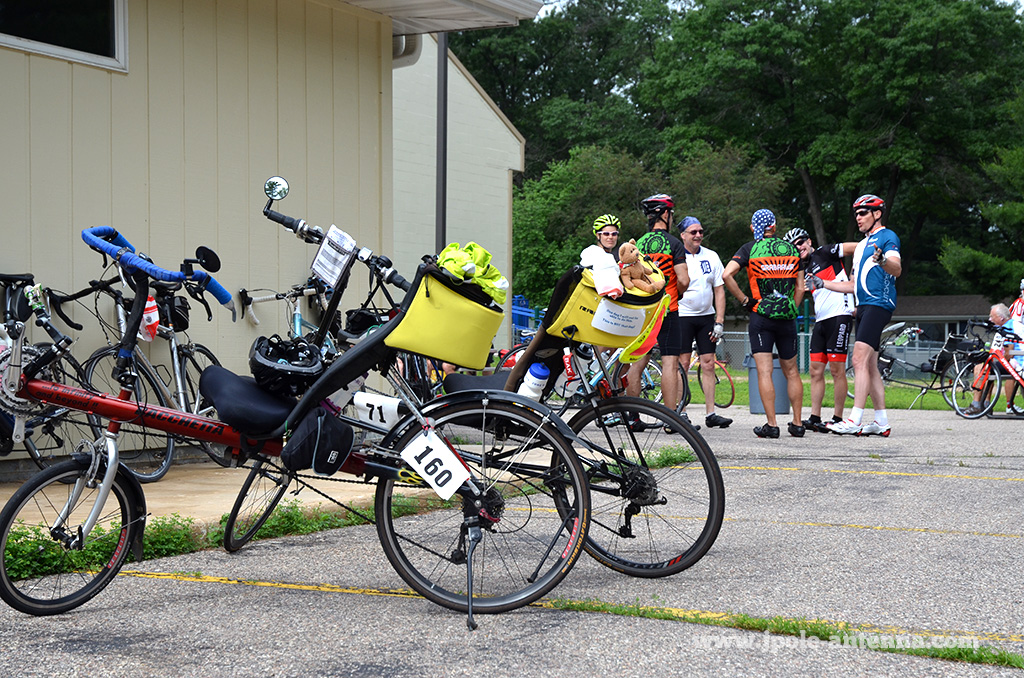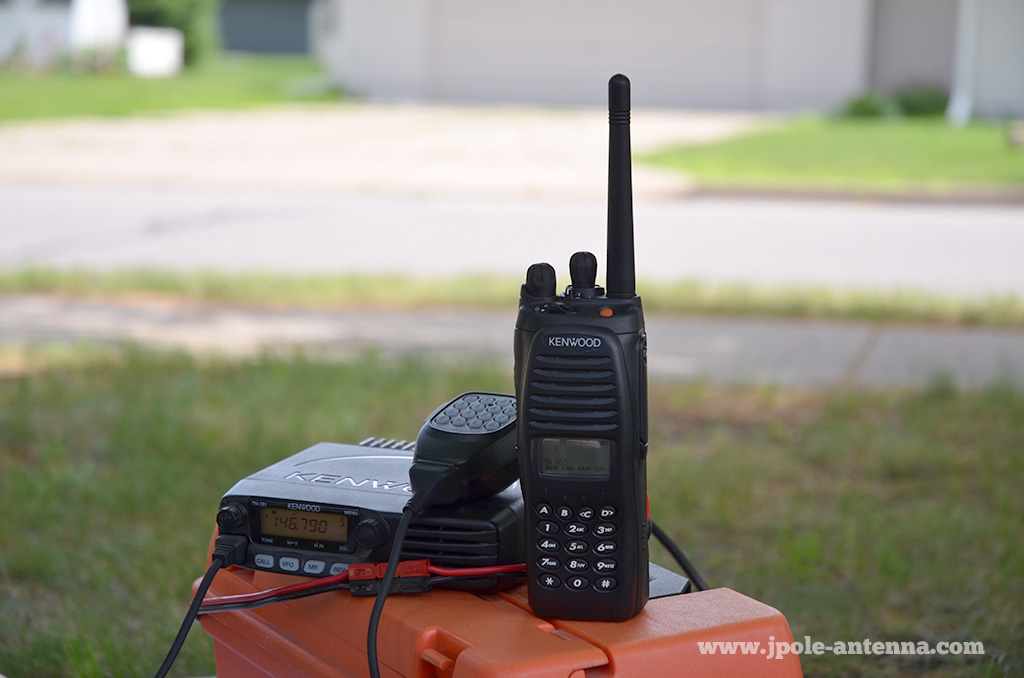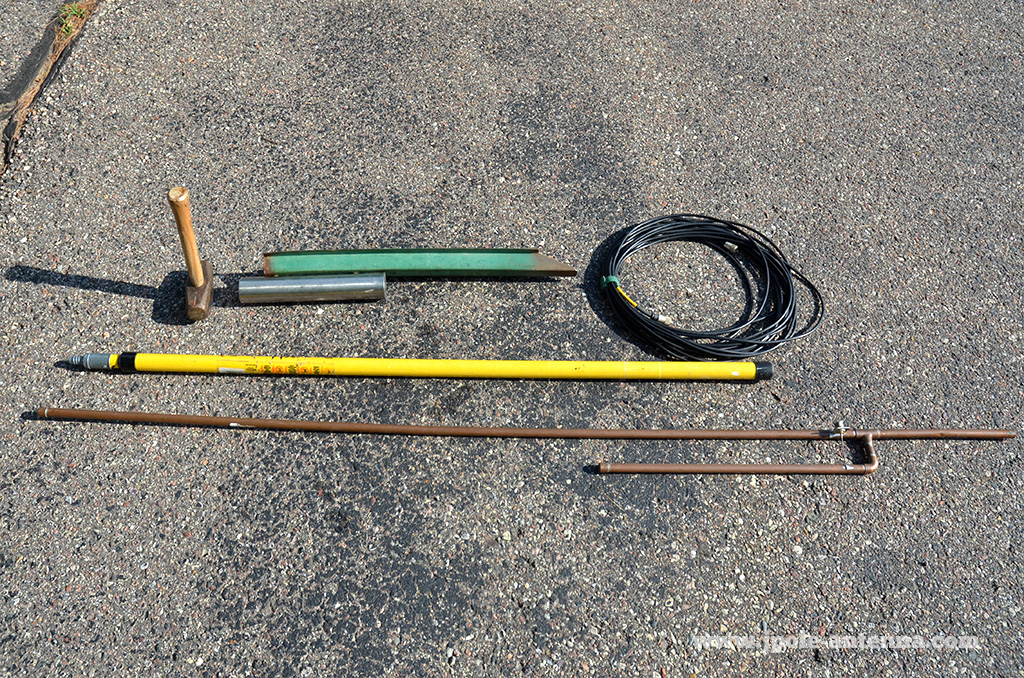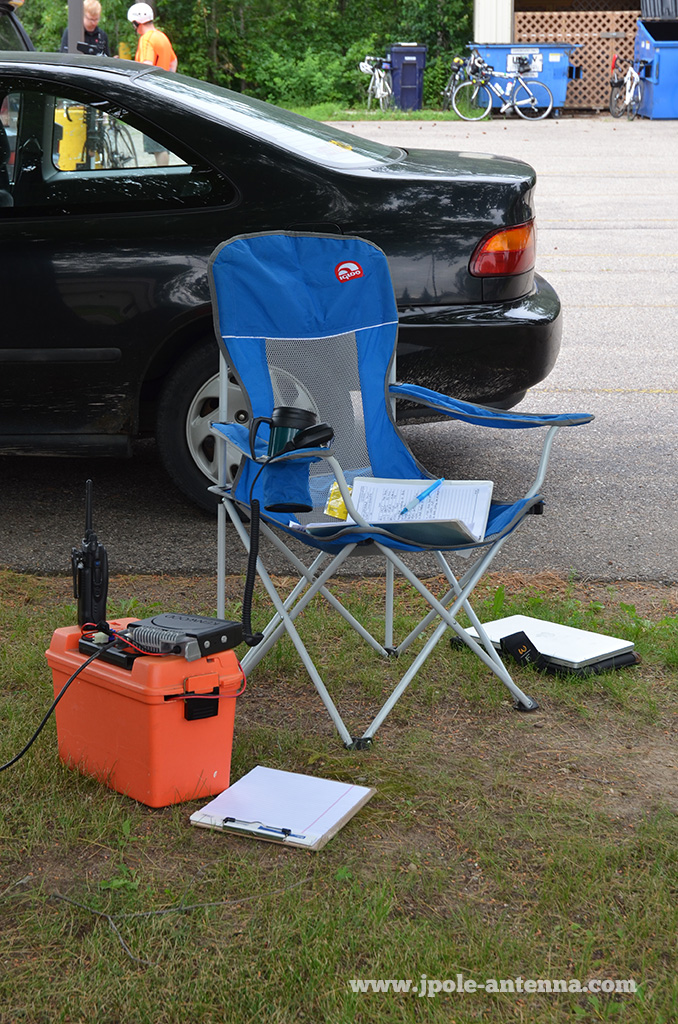As an avid cyclist, I like to help out when the annual Great Annual Bike Ride Along the Wisconsin River or GRABAAWR ride comes through town. As a past participant in this and other week long bicycle adventures, this is my way of giving back to the cycling community. Amateur radio plays an important part in keeping the participants in the event safe.
 On a typical day the cyclists will ride on about 80 miles for each leg of their 6 day trip along the path of the Wisconsin River as it starts near Manitowish Waters in Northern Wisconsin and ends at the southern terminus in Prairie du Chein. This 450 mile journey has beautiful scenery and a rolling landscape that is a joy to ride. But it isn’t without challenges as the 400 some bicycle riders navigate its course. The biggest challenge in a ride this size is communications and on a daily basis anywhere from 6-10 ham radio operators will volunteer to provide communications along the course.
On a typical day the cyclists will ride on about 80 miles for each leg of their 6 day trip along the path of the Wisconsin River as it starts near Manitowish Waters in Northern Wisconsin and ends at the southern terminus in Prairie du Chein. This 450 mile journey has beautiful scenery and a rolling landscape that is a joy to ride. But it isn’t without challenges as the 400 some bicycle riders navigate its course. The biggest challenge in a ride this size is communications and on a daily basis anywhere from 6-10 ham radio operators will volunteer to provide communications along the course.
Cell phones just won’t cut it, especially in the northwoods. There are dead spots galore and the point to point connection of a cell phone doesn’t do anything to keep the other volunteers informed of the status of the ride. [pq] Ham radio provides vital communications to events of this size. [/pq] For example, on the third day of the ride we had an accident that necessitated the call for an ambulance. The injured rider’s companion was able to call in on their cell phone for 911 and to the communications center for the ride. While medical help was dispatched, the communications group then coordinated multiple volunteers to assist at the accident, pick up damaged bikes and shuttle the injured riders that required it. The power and coordination of the ham radio volunteers made all this happen.
For my personal setup in these rides I use a mobile radio powered by a deep cycle battery along with a 2 meter J-Pole antenna on a 12 foot painters pole. The power of the mobile radio and J-Pole antenna assures me that I’ll be able to get into the area repeaters where ever I may be stationed. With an 80 mile course you may be 10 miles away or as many as 40 miles away from the repeater. But what can be more common is to be stuck in a hole or valley, making the high powered radio more effective.
 The advantage of using the J-Pole for these events are twofold. With it’s omnidirectional radiation pattern and low noise floor, it gets out easily in a wide variety of locations. Plus the antenna’s simplicity is key; my whole setup can be assembled or torn down in about 5 minutes, making it easy to move to a new location if need be.
The advantage of using the J-Pole for these events are twofold. With it’s omnidirectional radiation pattern and low noise floor, it gets out easily in a wide variety of locations. Plus the antenna’s simplicity is key; my whole setup can be assembled or torn down in about 5 minutes, making it easy to move to a new location if need be.
This type of setup can be used for any event, not just a bike ride. You can even use the antenna and pole with your handheld radio, extending your range and increasing portability even more.

Kenwood TM-281A base radio and Kenwood TK-5210 commercial handheld radio that I use to communicate in the bike ride event.

My complete portable J-Pole communications kit. The radio and battery are stored in a separate container. The antenna can be deployed in less than five minutes
Have you ever volunteered to provide communications to an event like this? Let us know the challenges you faced in the comments below.

Yes I”ve participated in PS events and usually we have a simplex channel for close-in events and a repeater we can access w/phone patch if needed. One event our local club assists with is on-field eyes and ears at the Annual AirShow here in Florence SC. The perimeter is handled by Sheriff’s deputies and the Radio Amateurs are doing ride along with the tractor pulled trams from the parking areas to the entrance gate. We also are walking and ‘mingling’ with the public on the air field assisting with missing lost parents(kids) (at least one a yr) and any directing EMS to any injuried persons. We all like doing it and it gets us older guys/gals some exercise.
I hate to say but we have had to change freqs many times due to QRM from misguided hams that choose not to participate but to cause stress. So we have a couple of backups including one year a switch to 440MHz to keep comms open..sad.
I would like to know what is the contents of the orange box (a battery I’m sure but more details would be great.)
Thanks KO4Lloyd
Thanks for your experiences Lloyd. We always have a printed communication plan for when our emcomm group tackles public service events. QRM is unfortunate and a backup plan is vital in keeping everyone ‘one the same channel.’
You are correct about the orange box. It contains a 25Ah gel cell battery. It has more than enough capacity to keep me transmitting all day on high power. The radio connects to it via a fused 6 foot length of 14ga wire. I use Anderson Powerpoles for the connection. The box is big enough that I can slide the radio and microphone into it for storage so that the whole kit is grab and go.
After 13 years in the hobby, I finally was able to do some public service work, one of the reasons I got into ham radio to start with! Last year and this year both I was able to help out with 2 events; the MS Ride and with the (Make-A-)Wish Ride.
My setup: power provided by a deep cycle battery, Yaesu FT-8900R mobile radio, dual band magmount antenna, comfortable folding chair, clipboard, . The MS Ride happens around Omaha, the Wish ride is more in southwest Iowa. You’d think we’re out on the prairie here but around there are substantial hills and valleys, substantial enough that repeater coverage is a serious consideration. I personally was always in a fixed location and did not have any difficulties, but there was some need for relays to some stations and the SAG vehicles. I operated the radio on the middle power settings, but never worried about draining the battery seriously.
Thankfully, we never had to handle any injuries or accidents. There was a car accident that required an impromptu rerouting in the middle of one event.
I have a copper pipe J-pole that breaks down to a convenient size. I think will work on a portable mast like yours for it. Always good to have a backup!